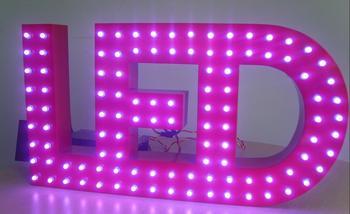
Privacy statement: Your privacy is very important to Us. Our company promises not to disclose your personal information to any external company with out your explicit permission.

 Recently, researchers at the Rensselaer Polytechnic Institute discovered the culprit of the "electron leakage" phenomenon, which is the reason why the light efficiency of LED light sources has dropped by as much as 20%.
Recently, researchers at the Rensselaer Polytechnic Institute discovered the culprit of the "electron leakage" phenomenon, which is the reason why the light efficiency of LED light sources has dropped by as much as 20%. November 04, 2024
November 04, 2024
November 12, 2024
November 11, 2024
이 업체에게 이메일로 보내기
November 04, 2024
November 04, 2024
November 12, 2024
November 11, 2024

Privacy statement: Your privacy is very important to Us. Our company promises not to disclose your personal information to any external company with out your explicit permission.

Fill in more information so that we can get in touch with you faster
Privacy statement: Your privacy is very important to Us. Our company promises not to disclose your personal information to any external company with out your explicit permission.